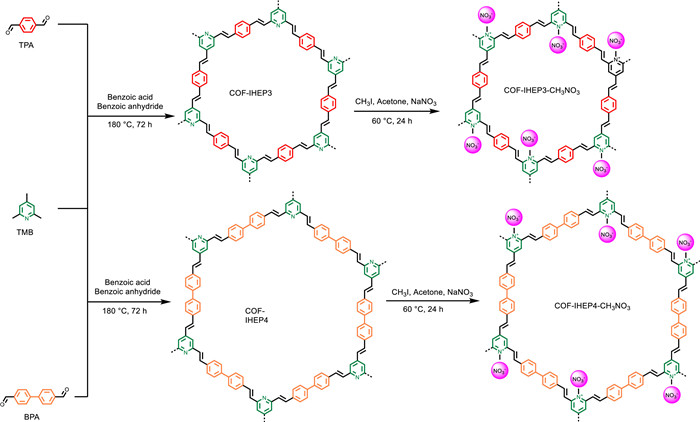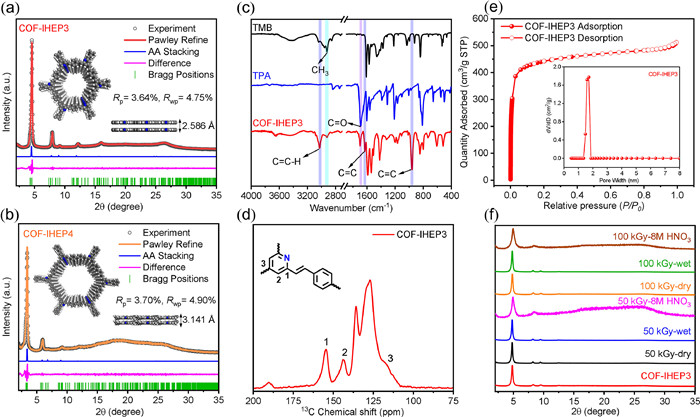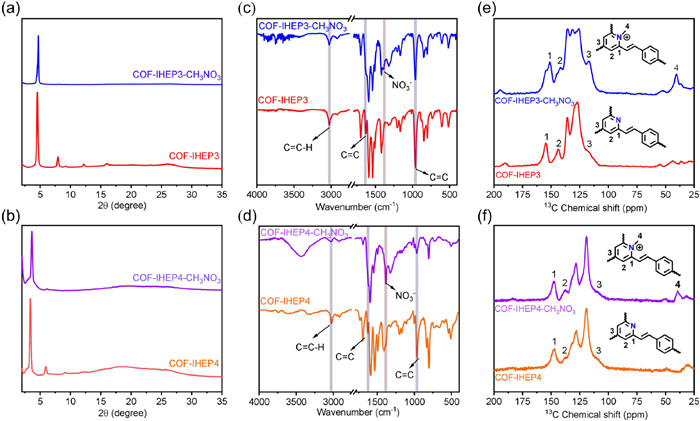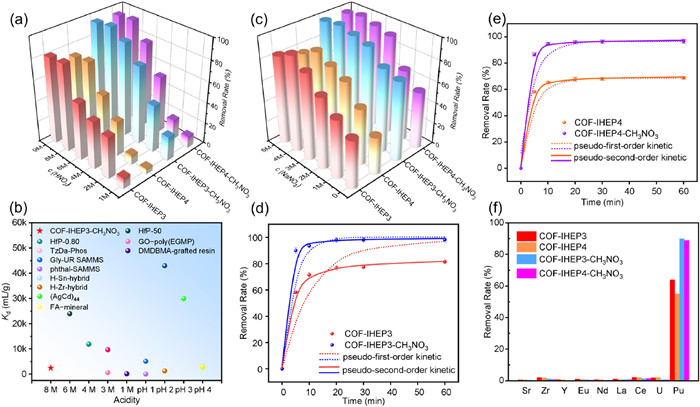-
[1]
O. Usman, O. Ozkan, G.N. Ike, J. Clean. Prod. 451 (2024) 142070.
-
[2]
M.F. Bashir, B.L. Ma, A. Sharif, et al., Technol. Soc. 75 (2023) 102385.
doi: 10.1016/j.techsoc.2023.102385
-
[3]
J. Veliscek-Carolan, J. Hazard. Mater. 318 (2016) 266–281.
doi: 10.1016/j.jhazmat.2016.07.027
-
[4]
M. Salvatores, Nucl. Eng. Des. 235 (2005) 805–816.
doi: 10.1016/j.nucengdes.2004.10.009
-
[5]
D. von Hippel, P. Hayes, J. Kang, et al., Energy Policy 39 (2011) 6867–6881.
-
[6]
A. Paulillo, J.M. Dodds, S.J. Palethorpe, et al., Sustain. Mater. Technol. 28 (2021) e00278.
-
[7]
C.Y. Liu, J.H. Lan, Q.B. Yan, et al., Chin. Chem. Lett. 33 (2022) 3561–3564.
doi: 10.3390/ma15103561
-
[8]
V. Gilinsky, Foreign Aff. 57 (1978) 374.
doi: 10.2307/20040120
-
[9]
D.X. Feng, M.C. Ji, H.Q. Liao, et al., Environ. Res. 216 (2023) 114677.
-
[10]
N. Vigier, S. Grandjean, B. Arab-Chapelet, et al., J. Alloys Compd. 444–445 (2007) 594–597.
doi: 10.1016/j.jallcom.2007.01.057
-
[11]
X.B. Li, Q.Y. Wu, C.Z. Wang, et al., Chin. Chem. Lett. 35 (2024) 109359.
-
[12]
C. Berger, C. Marie, D. Guillaumont, et al., Inorg. Chem. 59 (2020) 1823–1834.
doi: 10.1021/acs.inorgchem.9b03024
-
[13]
A. Rout, K. Chatterjee, K.A. Venkatesan, et al., Sep. Purif. Technol. 159 (2016) 43–49.
-
[14]
S. Sharma, S. Panja, A. Bhattacharyya, et al., Dalton Trans. 45 (2016) 7737–7747.
-
[15]
B. Sreenivasulu, C.V.S. Brahmananda Rao, A. Suresh, et al., J. Radioanal. Nucl. Chem. 331 (2022) 3623–3632.
doi: 10.1007/s10967-022-08451-6
-
[16]
Y.M. Chen, C.Z. Wang, L. Zhang, et al., J. Mol. Liq. 386 (2023) 122404.
-
[17]
A. Kaya, J. Shirahashi, et al., J. Nucl. Sci. Technol. 4 (1967) 289–292.
-
[18]
J.G. Pribyl, K.M.L. Taylor-Pashow, T.C. Shehee, et al., ACS Omega 3 (2018) 8181–8189.
doi: 10.1021/acsomega.8b01057
-
[19]
P. Zhao, J.D. Begg, M. Zavarin, et al., Environ. Sci. Technol. 50 (2016) 6948–6956.
doi: 10.1021/acs.est.6b00605
-
[20]
B. Rao, X.Y. Ma, K. Q, et al., Chem. Eng. J. 431 (2022) 134169.
-
[21]
Z. Wang, M.C. Liu, L. Wang, et al., Molecules 27 (2022) 3110.
doi: 10.3390/molecules27103110
-
[22]
H.D. Zhang, S. Wang, J.P. Yu, et al., Chem. Eng. J. 463 (2023) 142408.
-
[23]
S.C. Zhong, Y. Wang, T. Bo, et al., Chem. Eng. J. 455 (2023) 140523.
-
[24]
Y. Wang, J.H. Lan, X.F. Yang, et al., Adv. Funct. Mater. 32 (2022) 2205222.
-
[25]
X.W. Liu, A.R. Zhang, R. Ma, et al., Chin. Chem. Lett. 33 (2022) 3549–3555.
-
[26]
B.Y. Zhang, L.L. Chen, Z.N. Zhang, et al., Adv. Sci. 9 (2022) 2105912.
-
[27]
L.Y. Xiao, Z.L. Wang, J.Q. Guan, Adv. Funct. Mater. 34 (2024) 2310195.
-
[28]
W.R. Cui, C.R. Zhang, R.H. Xu, et al., ACS EST Water 1 (2021) 440–448.
doi: 10.1021/acsestwater.0c00176
-
[29]
P.F. Dong, X.Y. Xu, R.G. Luo, et al., J. Am. Chem. Soc. 145 (2023) 15473–15481.
doi: 10.1021/jacs.3c03897
-
[30]
H. Hu, C.L. Song, D. Wang, et al., Chin. Chem. Lett. 34 (2023) 107770.
-
[31]
C. Liu, C. Jia, S.X. Gan, et al., Chin. Chem. Lett. 35 (2024) 109750.
-
[32]
E.B. Zhou, X. Zhang, L. Zhu, et al., Adv. Funct. Mater. 33 (2023) 2213667.
-
[33]
J. Li, X.C. Jing, Q.Q. Li, et al., Chem. Soc. Rev. 49 (2020) 3565–3604.
doi: 10.1039/d0cs00017e
-
[34]
F. Liu, C.J. Wang, C. Liu, et al., Appl. Phys. Lett. 119 (2021) 211905.
-
[35]
M.X. Wu, Y.W. Yang, Chin. Chem. Lett. 28 (2017) 1135–1143.
-
[36]
L.Y. Ou, Z.L. Xue, B. Li, et al., Chin. Chem. Lett. (2024) 110294.
-
[37]
H.M. Wang, H.M. Ding, X.S. Meng, et al., Chin. Chem. Lett. 27 (2016) 1376–1382.
-
[38]
H.M. El-Kaderi, J.R. Hunt, J.L. Mendoza-Cortés, et al., Science 316 (2007) 268–272.
doi: 10.1126/science.1139915
-
[39]
A.P. Côté, A.I. Benin, N.W. Ockwig, et al., Science 310 (2005) 1166–1170.
doi: 10.1126/science.1120411
-
[40]
T. Li, Y. Pan, B.B. Shao, et al., Adv. Funct. Mater. 33 (2023) 2304990.
-
[41]
F.J. Uribe-Romo, J.R. Hunt, H. Furukawa, et al., J. Am. Chem. Soc. 131 (2009) 4570–4571.
doi: 10.1021/ja8096256
-
[42]
E.Q. Jin, J. Li, K.Y. Geng, et al., Nat. Commun. 9 (2018) 4143.
-
[43]
P.H. Zhang, Z.F. Wang, S. Wang, et al., Angew. Chem. Int. Ed. 61 (2022) e202213247.
-
[44]
S.C. Wei, F. Zhang, W.B. Zhang, et al., J. Am. Chem. Soc. 141 (2019) 14272–14279.
doi: 10.1021/jacs.9b06219
-
[45]
E.Q. Jin, M. Asada, Q. Xu, et al., Science 357 (2017) 673–676.
doi: 10.1126/science.aan0202
-
[46]
A. Acharjya, P. Pachfule, J. Roeser, et al., Chem. Int. Ed. 58 (2019) 14865–14870.
doi: 10.1002/anie.201905886
-
[47]
S.C. Zhong, Y. Wang, M.S. Xie, et al., Chin. Chem. Lett. 36 (2025) 110312.
-
[48]
F.L. Zhang, H.M. Hao, X.Y. Dong, et al., Appl. Catal. B: Environ. 305 (2022) 121027.
-
[49]
F.L. Zhang, X.Y. Ma, X.Y. Dong, et al., Chem. Eng. J. 451 (2023) 138802.
-
[50]
F.L. Zhang, Y.X. Wang, H.X. Zhao, et al., ACS Appl. Mater. Interfaces 16 (2024) 8772–8782.
doi: 10.1021/acsami.3c16838
-
[51]
Z.L. Li, H. Li, X.Y. Guan, et al., J. Am. Chem. Soc. 139 (2017) 17771–17774.
doi: 10.1021/jacs.7b11283
-
[52]
K.C. Sole, M.B. Mooiman, E. Hardwick, Sep. Purif. Rev. 47 (2018) 159–178.
-
[53]
J. van Deventer, Solvent Extr. Ion Exch. 29 (2011) 695–718.
doi: 10.1080/07366299.2011.595626
-
[54]
M.V. Ryzhinsky, A.V. Stepanov, J. Radioanal. Nucl. Chem. 147 (1991) 27–32.
-
[55]
S.A. Ansari, P.K. Mohapatra, V.K. Manchanda, J. Hazard. Mater. 161 (2009) 1323–1329.
-
[56]
G.E. Fryxell, Y.H. Lin, S. Fiskum, et al., Environ. Sci. Technol. 39 (2005) 1324–1331.
doi: 10.1021/es049201j
-
[57]
S. Chappa, A.K. Singha Deb, Sk.M. Ali, et al., J. Phys. Chem. B 120 (2016) 2942–2950.
doi: 10.1021/acs.jpcb.5b11293
-
[58]
M. Kaur, H.J. Zhang, L. Martin, et al., Environ. Sci. Technol. 47 (2013) 11942–11959.
doi: 10.1021/es402205q
-
[59]
R.M. Tinnacher, J.D. Begg, H. Mason, et al., Environ. Sci. Technol. 49 (2015) 2776–2785.
doi: 10.1021/es505120s
-
[60]
L.P. Xiong, K. Lv, M. Gu, et al., Chem. Eng. J. 355 (2019) 159–169.
-
[61]
S.Q. Xu, Z.Q. Liao, A. Dianat, et al., Angew. Chem. 134 (2022) e202202492.
-
[62]
Q.Y. Guo, H.Y. Ji, L. Yang, et al., Chin. Chem. Lett. 33 (2022) 2621–2624.
-
[63]
D.L. Pastoetter, S.Q. Xu, M. Borrelli, et al., Angew. Chem. Int. Ed. 59 (2020) 23620–23625.
doi: 10.1002/anie.202010398
-
[64]
X.Y. Wang, J.Y. Yang, X.S. Shi, et al., Small 18 (2022) 2107108.
-
[65]
Y. Liang, M. Xia, Q.H. Yu, et al., Adv. Compos. Hybrid Mater. 5 (2022) 184–194.
doi: 10.1007/s42114-021-00311-3
-
[66]
M.H. Liu, Q. Xu, G.F. Zeng, Angew. Chem. Int. Ed. 63 (2024) e202404886.
-
[67]
S. Chatterjee, J.M. Peterson, A.J. Casella, et al., Inorg. Chem. 59 (2020) 6826–6838.
doi: 10.1021/acs.inorgchem.0c00199
-
[68]
H.B. Li, G.A. Ye, X.R. Wang, et al., J. Nucl. Radiochem. 32 (2010) 65–69.
-
[69]
R. Bu, L. Zhang, X.Y. Liu, et al., ACS Appl. Mater. Interfaces 13 (2021) 26431–26440.
doi: 10.1021/acsami.1c01791
-
[70]
X.D. Gong, Q. Tian, J.B. Li, et al., Appl. Surf. Sci. 615 (2023) 156307.
-
[71]
G. Schreckenbach, T. Ziegler, J. Phys. Chem. 99 (1995) 606–611.
doi: 10.1021/j100002a024
-
[72]
A. Schäfer, A. Klamt, D. Sattel, et al., Phys. Chem. Chem. Phys. 2 (2000) 2187–2193.

 Login In
Login In







 DownLoad:
DownLoad:



